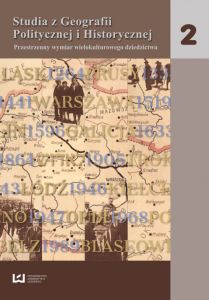Ludność polska w wieloetnicznych regionach Litwy, Łotwy i Białorusi
The Polish population in multi-ethnic regions of Lithuania, Latvia and Belarus
Author(s): Mariusz KowalskiSubject(s): Essay|Book Review |Scientific Life
Published by: Wydawnictwo Uniwersytetu Łódzkiego
Keywords: Wileńszczyzna; Łatgalia; Grodzieńszczyzna; mniejszość polska; regiony wieloetniczne; stosunki narodowościowe; Vilnius region; Latgale region; Hrodna region; Polish minority; multiethnic regions; ethnic relations.
Summary/Abstract: Pomimo podobnych uwarunkowań historycznych mniejszość polska, zamieszkująca tereny dawnego Wielkiego Księstwa Litewskiego i Inflant Polskich, w zależności od miejsca zamieszkania (Litwa, Łotwa, Białoruś) znajduje się w odmiennej sytuacji społeczno-gospodarczej i polityczno-ustrojowej. Odciska się to na relacjach mniejszości polskiej z innymi grupami etnicznymi oraz władzami państwowymi. Analiza sytuacji sugeruje, iż pod wieloma względami najlepsze warunki dla pielęgnowania swojej odrębności (pomimo niewielkiej liczebności) ma mniejszość polska na Łotwie. Na przeciwległym krańcu, choć najliczniejsza, znajduje się mniejszość polska na Białorusi. The aim of the paper was to compare the situation of the Polish minority in the three bordering countries: Lithuania, Latvia and Belarus. Despite similar historical circumstances contemporary groups of Polish minority in the lands of former Grand Duchy of Lithuania and Polish Livonia living in the different socio-economic and political conditioning. This situation affecting their relations with other ethnic groups and state authorities. All of the researched areas – Vilnius region in Lithuania, Latgale region in Latvia, Hrodna region in Belarus – are multicultural. In all, owing to special circumstances of Eastern Slavic-Baltic ethnic borderland, a compact Polish ethnic area was formed. Despite the deportation and postwar emigration of Poles and despite that areas inhabited by them belong to three different states, the Polish population still represents a significant proportion of the population, affecting the local socio-cultural and political life. In Belarus further melting of Polish ethnic area is observed, associated with a decrease in the number of Poles, both in absolute and relative terms. This can be combined with both the difficult situation of the Polish population in the Soviet period (no schools and other Polish institutions), and the current socio-political situation in Belarus. Under Lukashenka’s dictatorial rule the Polish minority action is merely tolerated. Government support the policy of the tsarist and Soviet authorities, under which local Poles were considered as regional (Catholic) branch of the Belarusian people. Paradoxically, the relatively best situation concern the Polish population in Latvia, where Polish community is the least numerous, both in absolute and relative terms. The clear revival of Polish socio-cultural, and even increasing participation of Poles in some areas, can be observed. The Latvian authorities are positively oriented to the Polish socio-cultural initiatives, seeing the Polish movement as a counterweight to the demographic dominance of East Slavic population (Russians, Belarusians, and Ukrainians) in the south-eastern part of the country.
Journal: Studia z Geografii Politycznej i Historycznej
- Issue Year: 2013
- Issue No: 02
- Page Range: 205-237
- Page Count: 33
- Language: Polish

